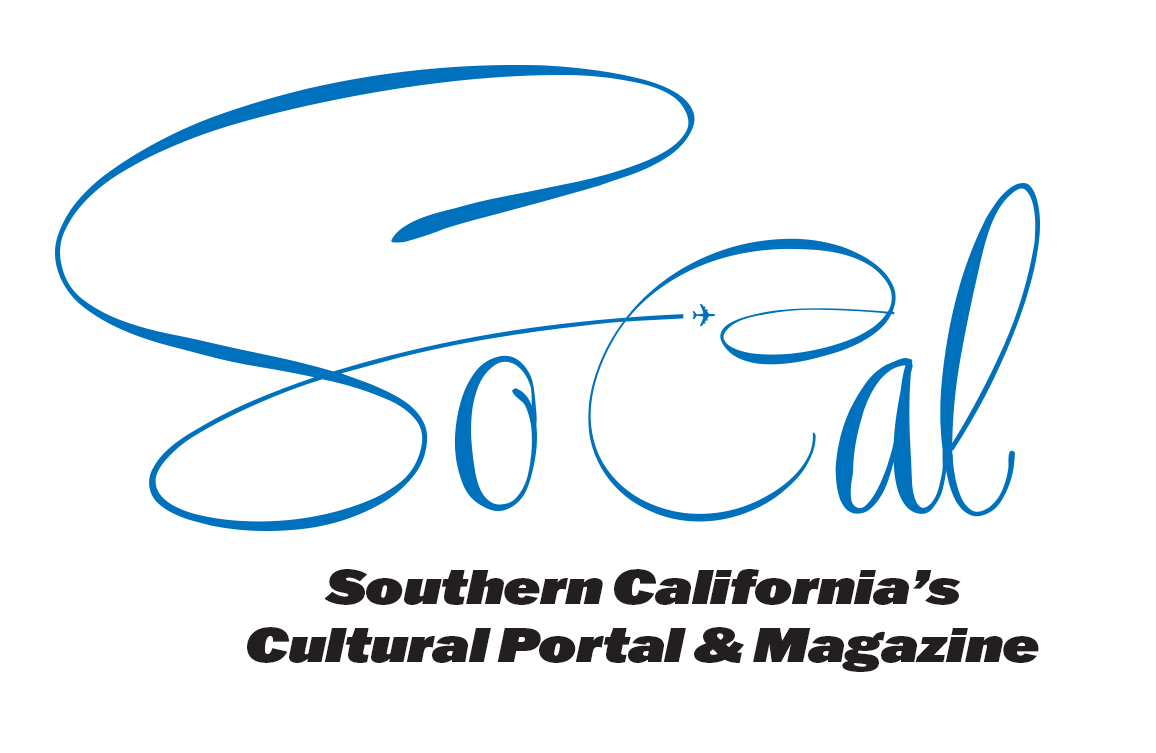LA Opera is presenting West Side Story for the first time, opening its 40th Anniversary Season at the Dorothy Chandler Pavilion. This landmark production also marks the final season of James Conlon as Music Director, after two decades leading the company. The production gives Leonard Bernstein’s iconic musical a grand operatic treatment, featuring a full orchestra in the pit and a mix of opera singers and Broadway-trained performers onstage.
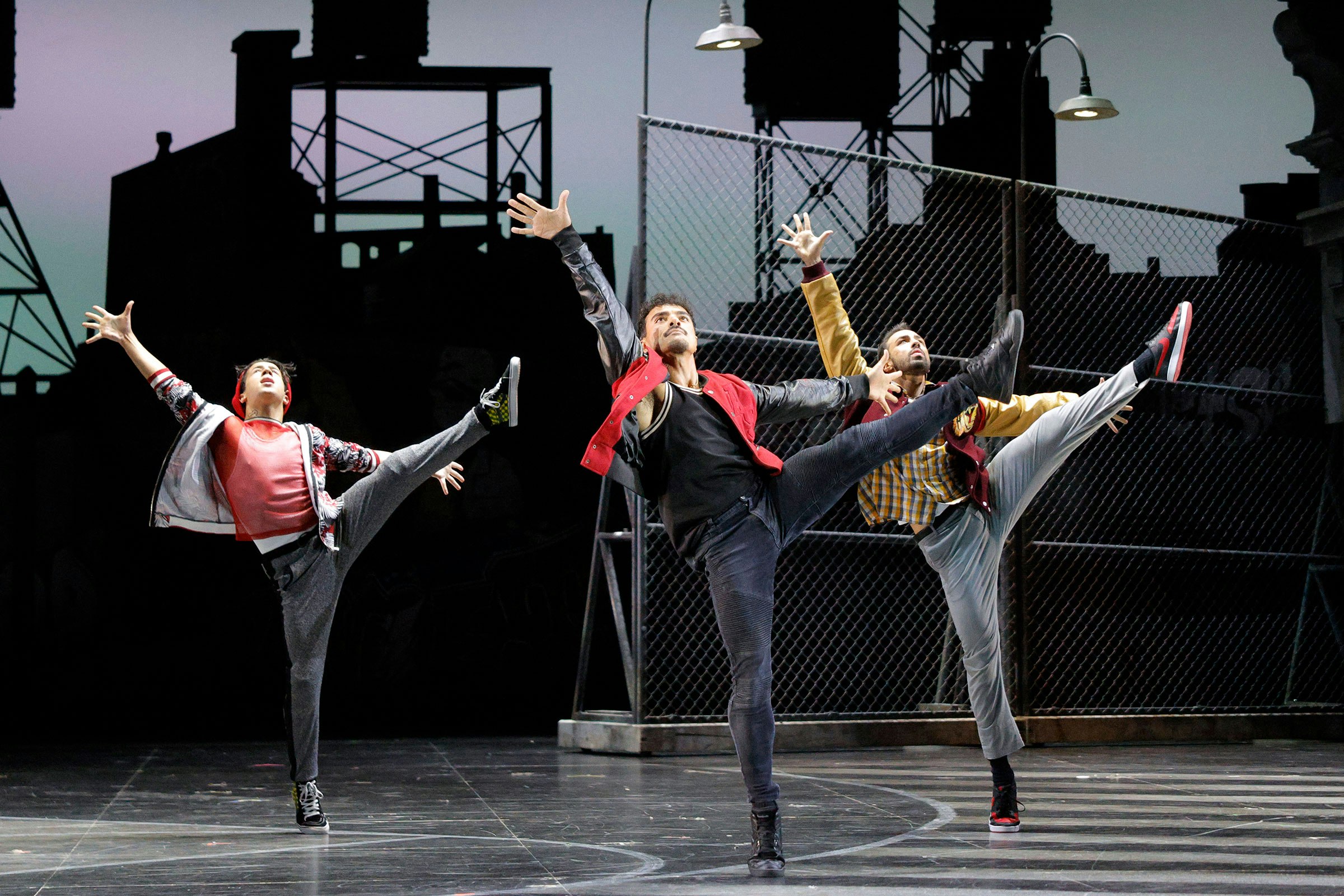
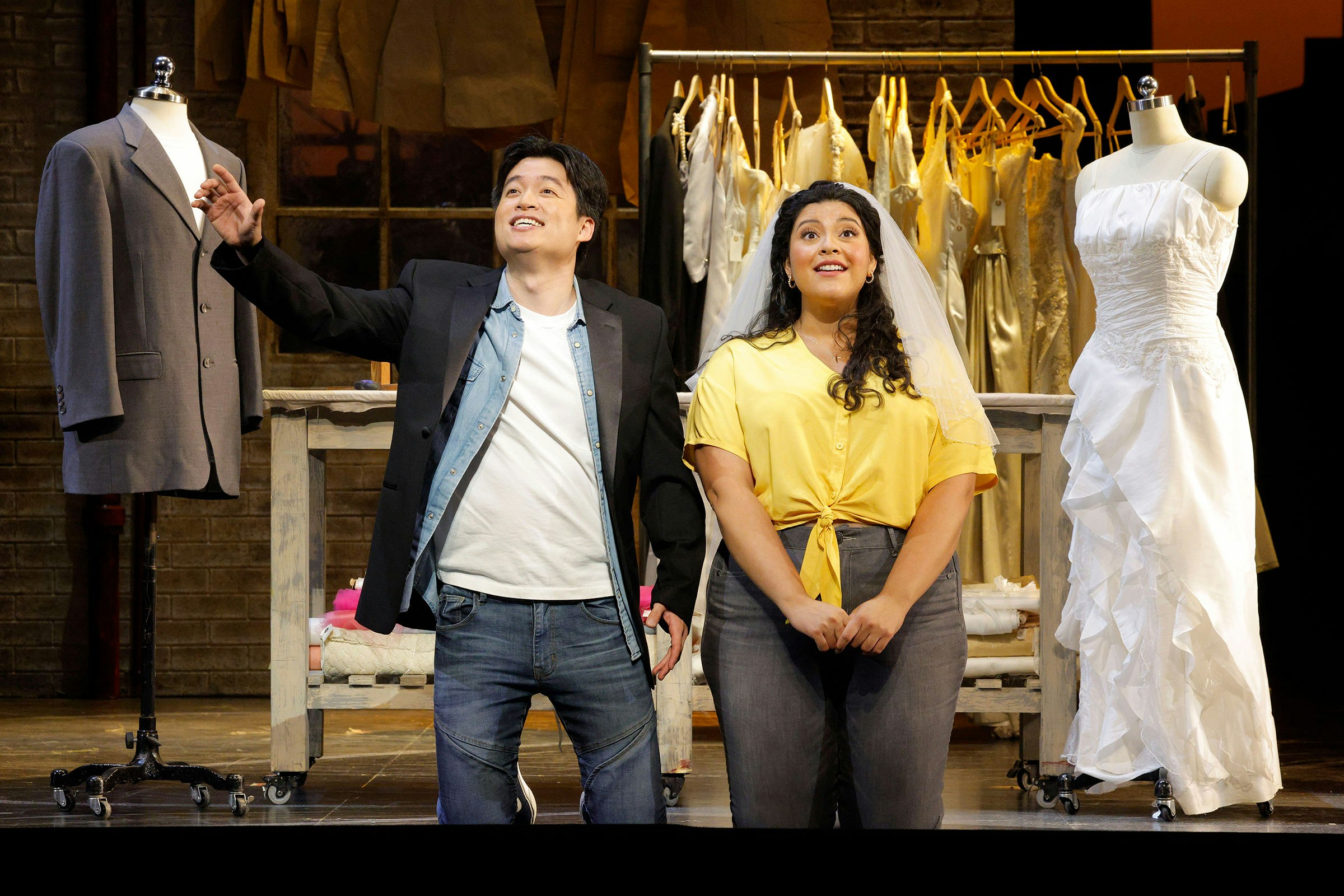
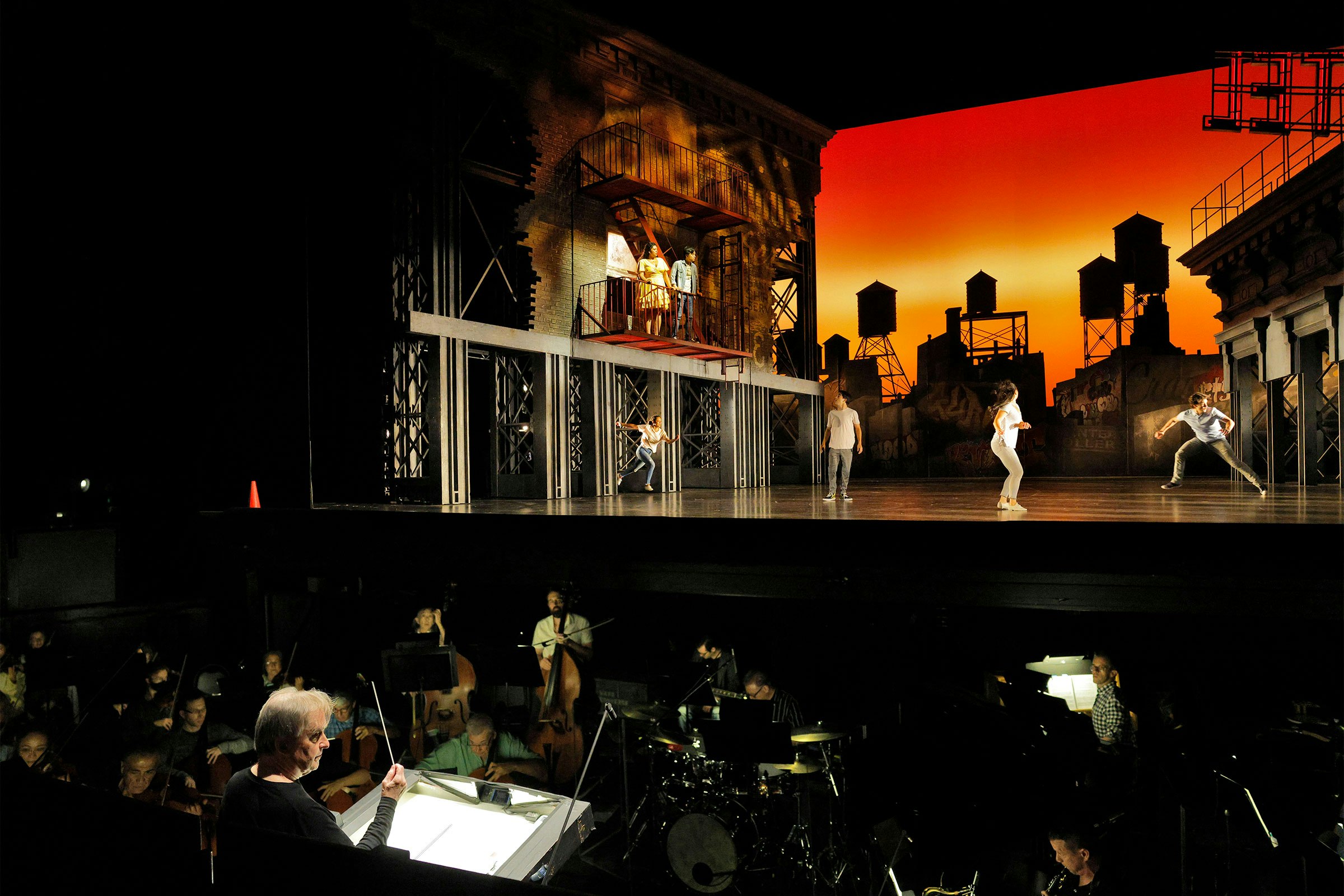
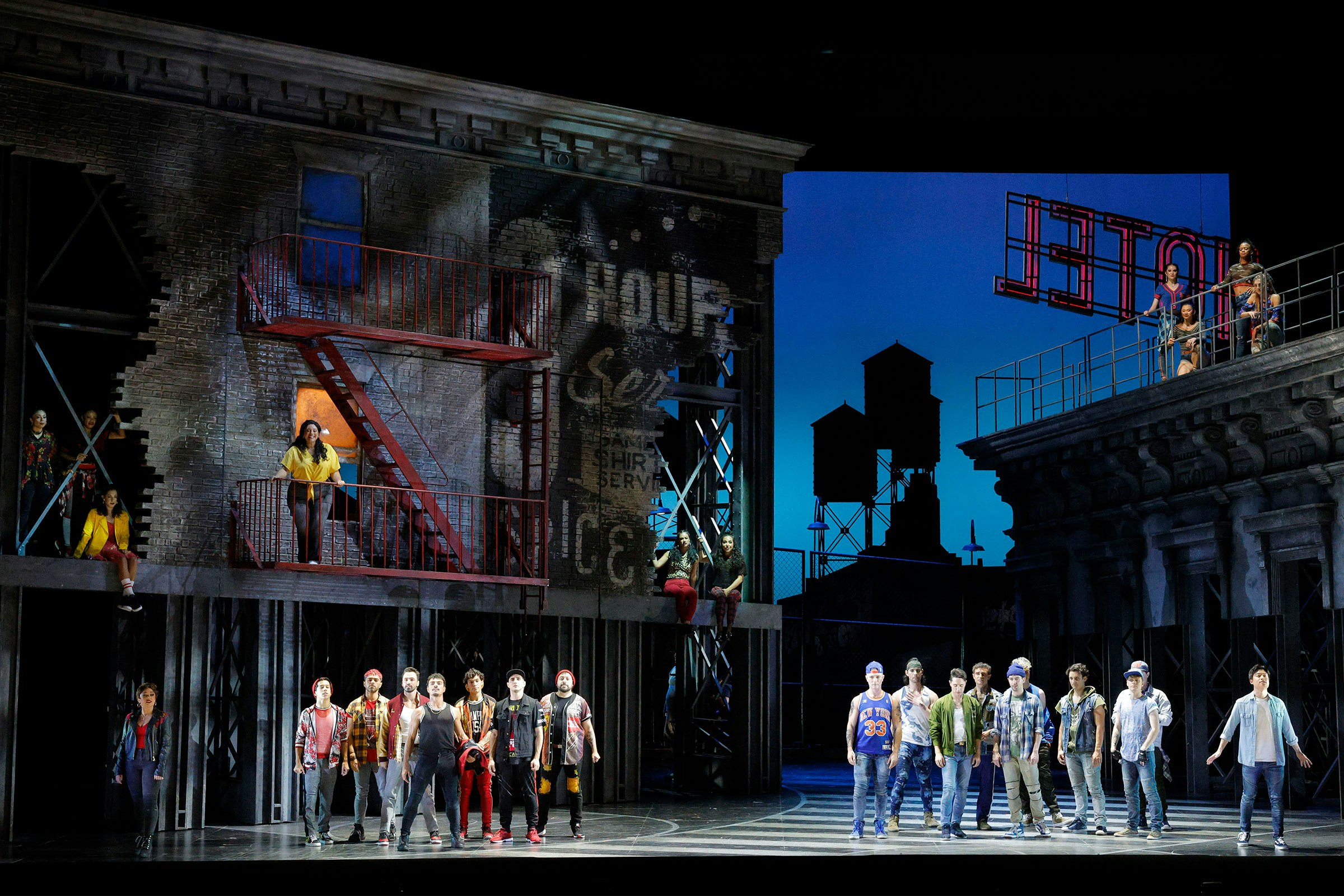
“The Tonight Quintet.” (Photo: Cory Weaver/LAO)
Below: James Conlon conducts a West Side Story rehearsal. (Photo: Cory Weaver/LAO)
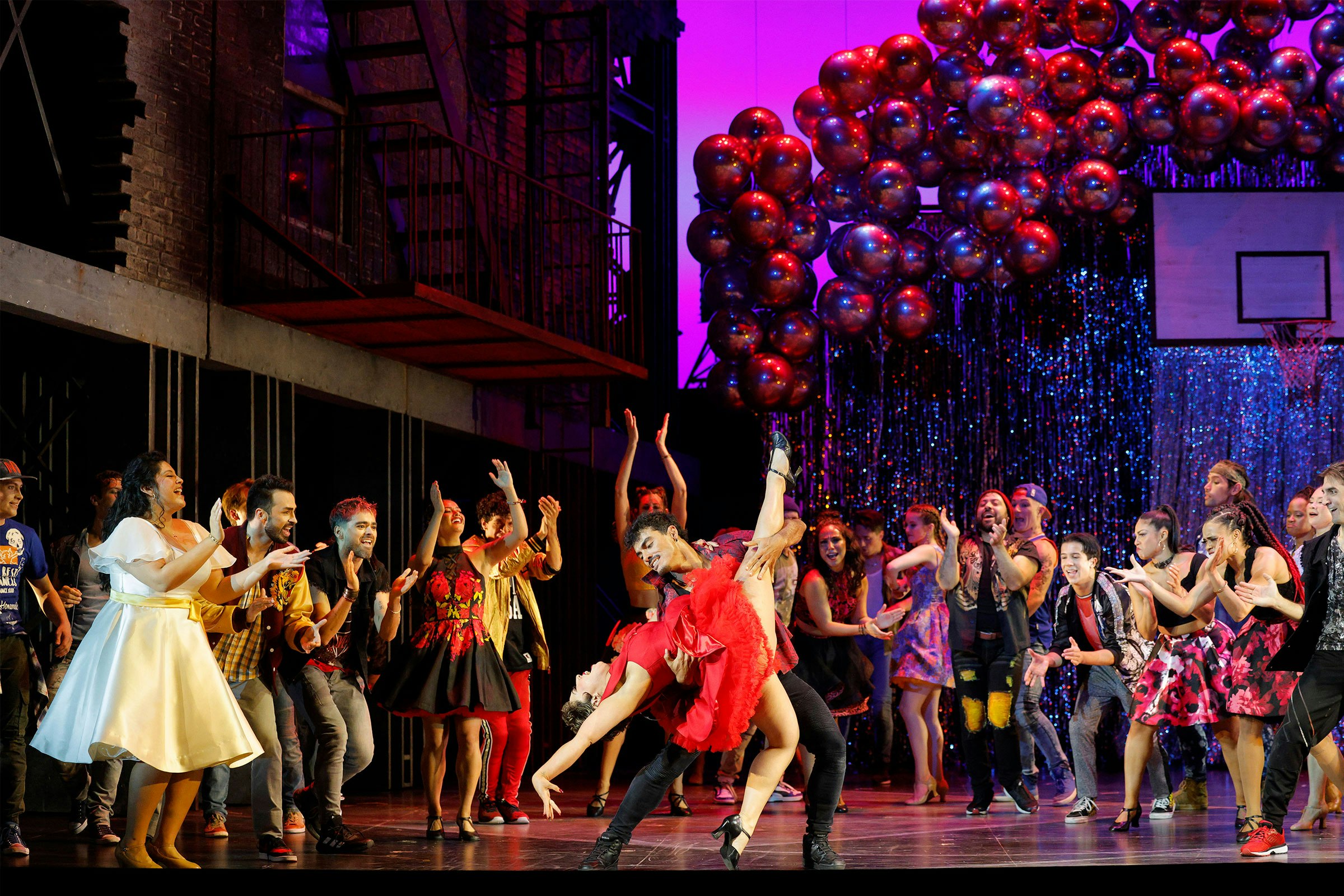
“Would you believe in love at first sight?” asked Ringo Starr on 1967’s Sgt. Pepper’s Lonely Hearts Club Band. That question seems as apt for LA Opera’s epic new version of West Side Story as it did for the Beatles.
LA Opera is presenting West Side Story for the first time, opening its 40th Anniversary Season at the Dorothy Chandler Pavilion. This landmark production also marks the final season of James Conlon as Music Director, after two decades leading the company. The production gives Leonard Bernstein’s iconic musical a grand operatic treatment, featuring a full orchestra in the pit and a mix of opera singers and Broadway-trained performers onstage.
Directed by Francesca Zambello, the staging preserves Jerome Robbins’s legendary choreography while heightening the drama of the piece. The cast includes soprano Gabriella Reyes in her LA Opera debut as Maria, tenor Duke Kim as Tony, Amanda Castro as Anita, Taylor Harley as Riff, and Yurel Echezarreta as Bernardo.
The production runs from September 20 through October 12, 2025, with performances designed to feel larger, bolder, and more “operatic” than traditional stagings. For audiences who cannot attend in person, LA Opera is offering a free simulcast on September 27, streaming live to the Santa Monica Pier and Loma Alta Park in Altadena.
West Side Story is a landmark American musical that premiered on Broadway in 1957, with music by Leonard Bernstein, lyrics by Stephen Sondheim, book by Arthur Laurents, and choreography by Jerome Robbins. A modern retelling of Romeo and Juliet, it is set in 1950s New York City, focusing on the rivalry between two street gangs—the white American Jets and the Puerto Rican Sharks—and the doomed romance between Tony and Maria. The show broke new ground by blending ballet, jazz, and Latin dance with a serious social message about love, prejudice, and violence. Its score introduced classics such as “Maria” and “Tonight.” The 1961 film adaptation, directed by Robert Wise and Jerome Robbins, won ten Academy Awards, including Best Picture, solidifying its cultural legacy. Revivals and reinterpretations continue to appear, most recently Steven Spielberg’s 2021 film, proving the story’s enduring power as both entertainment and social commentary.
LA Opera’s version offers a modern update—Anita’s room, for example, features Bad Bunny posters. At its heart, it remains a fairy tale, asking the audience to believe that two strangers can fall deeply in love. Yet, this is also a musical that opens with a group of young men dancing in unison on the streets of New York. Never has youth been so well choreographed: Jerome Robbins’s staccato finger-snapping movements propel the drama across the limited stage, brilliantly enhanced by Peter J. Davison’s set design and Mark McCullough’s lighting.
Gabriella Reyes brings innocence and lightness to Maria, matched with a big, commanding voice. Duke Kim’s Tony is operatic by nature, his voice soaring in moments of romance, his “Maria” drew the largest audience applause. Act One moves quickly and deliberately sets the stage for a climactic rumble. Act Two, however, introduces some dramatic oddities: the deaths of two main characters seem understated, and Maria’s reaction to her brother’s death can feel unrealistic, though one must remember that all events unfold within a 24-hour period.
In the late 1950s, Broadway was a vibrant mix of charm, romance, and the beginnings of grittier urban storytelling, with West Side Story (1957) leading the way in its bold portrayal of love and conflict in New York’s streets. For many, this show is a watershed experience in their lives. To the extent that this musical was different, its importance can be measured by its daring integration of music, dance, and narrative to address social tensions, a stark contrast to the lighter fare of the time. Audiences were also enchanted by the lyrical elegance of My Fair Lady (1956), the small-town whimsy of The Music Man (1957), and the workplace antics of The Pajama Game (1954). Even earlier hits like Oklahoma! and Rodgers and Hammerstein’s Carousel continued to captivate theatergoers through revivals, while politically infused tales such as Fiorello! (1959) added a sharp contemporary edge. Together, these musicals created a rich tapestry of melody, story, and social reflection, marking a golden era where Broadway balanced both lighthearted delight and the stirring power of more daring, modern narratives. It should be noted that the Tony Awards that year went to The Music Man.
This LA Opera version serves as a metaphor: in a climate of political tension surrounding immigration, DEI, and related issues, the production proudly presents a uniquely diverse cast, reflecting the world it portrays and emphasizing inclusion not just as a concept, but as a lived reality on stage. Through this casting and the bold storytelling of West Side Story, the opera transforms a classic tale of rivalry and romance into a timely commentary on cultural intersection, social justice, and the power of representation in the arts.
For information and tickets visit https://www.laopera.org/
